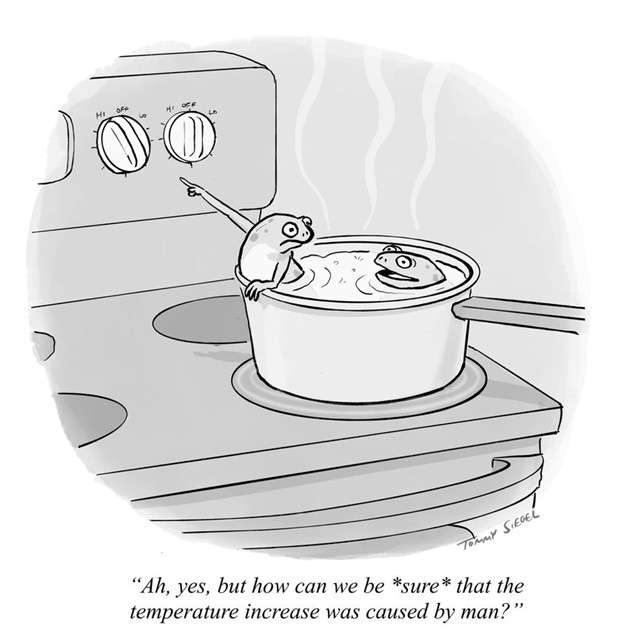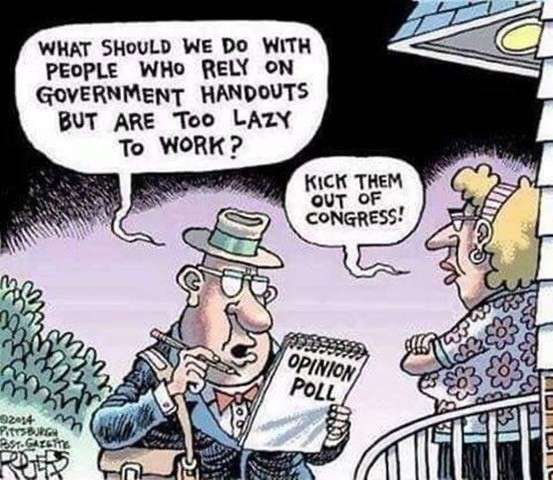
17 May Boiling the Constitutional Frog
“I do solemnly swear that I will faithfully execute the Office of President of the United States, and will to the best of my Ability, preserve, protect and defend the Constitution of the United States.” – Article II, Section 1, Clause 8
Meet the Press recently asked President Trump if he is required to uphold the Constitution. He replied “I don’t know. I’m not a lawyer.” That answer appalled many Americans…, but President Trump was just being President Trump. He knows all about America’s Constitution. He was tutored during his first term on how it limits Presidential power – about laws that hamstrung his efforts to ignore Constitutional protections and prevented him from unilaterally deleting regulations and imposing decrees by fiat – he now does so anyway by Executive Order – and about how to exercise Presidential power to keep Republican legislators in line – he threatens the re-election of those who oppose him. Trump 2.0 therefore has an understanding of America’s Constitution that differs from what has been taught in civics and at America’s law schools…, and he spent the past 4 years carefully planning how to make his interpretation America’s interpretation.
President Trump clarified his Meet the Press statement by adding, “I have brilliant lawyers that work for me, and they are going to obviously follow what the Supreme Court said. What [Meet the Press] said [about what the Supreme Court had said] is not what I heard the Supreme Court said. They have a different interpretation.” Exactly.
Take birthright citizenship. Trump 2.0 signed 143 Executive Orders during his first 100 days in office, and among the first was an Order purporting to end birthright citizenship, a right expressly stated in the Fourteenth Amendment. But putting an end to birthright citizenship was not the Trump 2.0 goal. The President knows that doing so requires a Constitutional amendment. His goal was more subtle and, as he no doubt expected, the Federal judges who heard challenges to his Executive Order issued injunctions preventing its enforcement (and were affirmed on appeal). One judge who had been appointed by Ronald Reagan found President Trump’s Executive Order to be “blatantly unconstitutional.” Yet, on appeal to the Supreme Court, the Trump Administration is not seeking to reverse those rulings. Instead, it is asking the Justices to narrow the holdings to apply only to the plaintiffs in those cases, not to “the hundreds of thousands” of individuals who could be affected by the Executive Order. If TLR’s reading of the Supreme Court tealeaves is correct, the Court may well agree…, with the consequence that America’s judicial system will then be hamstrung overwhelmed with “hundreds of thousands” of individual litigants, both with respect to birthright citizenship and challenges to the 151 (and growing) other Executive Orders (in addition to 39 memoranda and 54 proclamations) issued by President Trump. Trump 2.0’s goal is to utilize Executive Orders to short-circuit long-standing, legally-required administrative procedures and, in so doing, confound and defang Congressional and judicial objections and oversight. After all, it will take the courts many many months to reach decisions that only long thereafter will find resolution in the Supreme Court. This is a tactic that chips away at judicial authority and credibility. What then if the President decides to ignore the Supreme Court (as the Trump Administration already has done with respect to those individuals who were illegally deported)? To paraphrase a statement ascribed to President Andrew Jackson, “The Supreme Court has made its decision, now let them enforce it.”
America’s Constitution provides for a balanced sharing of power among the three branches: the executive (the President); the legislative (Congress); and the judicial (ultimately the Supreme Court). Each branch has the primary responsibility for a different set of specified tasks…, and each is intended to coordinate with the others to ensure that the actions taken by one branch do not overstep the boundaries set in the Constitution. There is nothing in the Constitution, however, that prevents a branch from failing to fulfill its responsibilities – which is precisely what Congress has been doing –, and to thereby allow another branch to expand its reach – which is precisely what the President is doing. Nor does the Constitution provide a means for the Judicial Branch to enforce its rulings.
Like Presidents Obama and Biden, President Trump has sought to evade sidestep burdensome administrative processes and Congressional mandates. He simply is taking evasion to its highest level…, and has finely honed his skills at doing so. Among other things, Trump 2.0 is relying on legal legerdemain to justify his Executive Orders. For example, the Order dealing with immigrant deportations purports to rely on the Alien Enemies Act, a 1798 law that allows for Presidential action against “natives, citizens, denizens, or subjects of” a foreign nation at “war” with the U.S. The courts thus far have been unimpressed with its applicability and have directed the President to effect the return of those unconstitutionally deported (including Kilmar Abrego Garcia). The Trump Administration has simply ignored both the Supreme Court’s and lower courts’ directives.
Creative legal legerdemain also serves as justification for Stephen Miller’s advocacy for suspending the writ of habeas corpus. President Trump has frequently asserted that America has been invaded, the invasion occurring “when Biden allowed 21 million people to flow into the country.” Mr. Miller adds that because “the Constitution is clear … that the privilege of the writ of habeas corpus can be suspended in a time of invasion,” the “immigrant invasion” justifies doing so now. President Trump understands that doing so at this time, however, would be a frog too far…, yet bandying such a radical concept at all is evidence of a carefully orchestrated step-by-step process that ratchets up the heat, further chipping away at the foundations of American Constitutional democracy.
The President’s floating of the $TRUMP and $MELANIA memecoins and his crafting of related gambits have raised the heat further, shredding the emoluments clause of the Constitution.
The same is true with respect to the powers allocated to Congress by Article 1 of the Constitution, which include the determination of whether America is at war, whether habeas corpus can be suspended, whether a President can unilaterally void regulations, whether a President can fire Federal employees without due process, whether a President can compel private businesses, law firms and universities to adhere to Executive Orders, whether a President can refuse to spend funds allocated by Congress, whether a President can unilaterally impose tariffs, etc. Congress can exercise its Constitutional powers…, or it can allow the President to reallocate them to himself. Congress has chosen the latter, significantly increasing the heat.
The Trump 2.0 process of aggregating power in the Presidency will continue as long as the Trump Administration’s application of that power results in successful policy execution. Trump 2.0 is looking towards the 2026 mid-term elections, when the American public will vote on whether or not it has achieved success. Voters will be unlikely to vote against the Republican majority unless they have an alternative worth voting for. That requires the Democratic Party to provide voters with a coherent alternative, something Kamala Harris failed to do during the 2024 Presidential campaign and the Democratic Party is failing to do today. Unless things change, Trump 2.0 will continue raising the temperature.
Finally (from a good friend)





No Comments